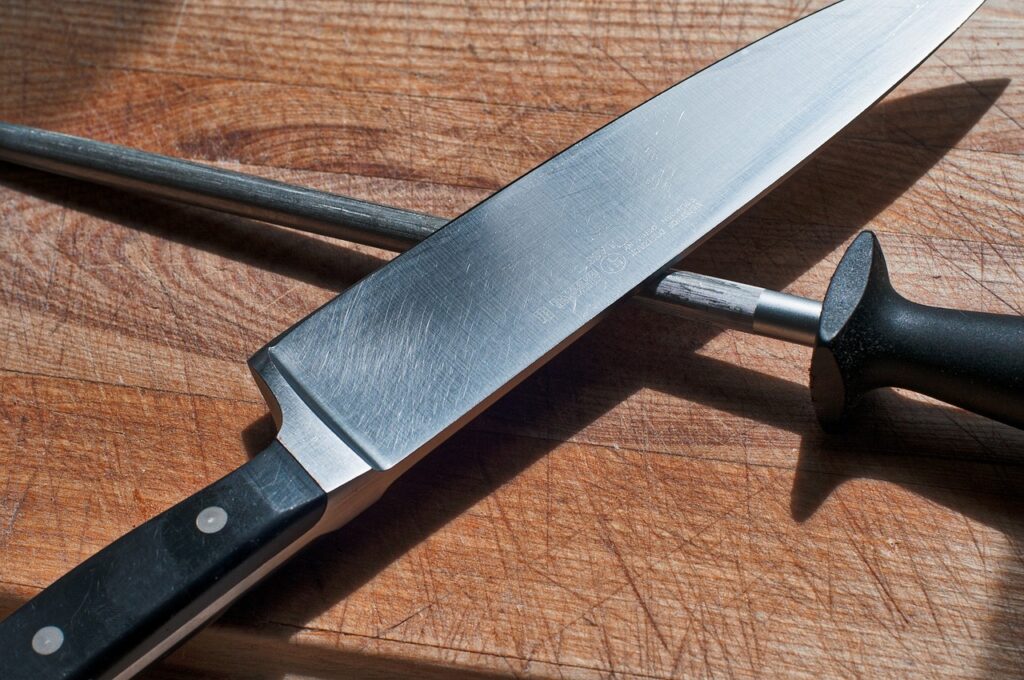Versatile tools in any kitchen
A chef’s knife is one of the most essential and versatile tools in any kitchen. It can be used for a variety of tasks, such as chopping, slicing, dicing, mincing, and more. However, not all chef’s knives are the same. There are different types of chef’s knives that have different features, advantages, and disadvantages. In this article, we will explore some of the most common types of chef’s knives and how to choose the best one for your needs.
Steel Chef’s Knives

Steel is the most common material for chef’s knives and can be made of different alloys. Steel chef’s knives are durable, sharp, and easy to sharpen. However, they can also rust, corrode, or stain if not properly maintained. Some of the most popular types of steel for chef’s knives are:
Stainless steel:

This is a type of steel that is resistant to rust and corrosion. It is also relatively affordable and widely available. However, it is not very hard and can lose its edge quickly.
Carbon steel:

This is a type of steel that is harder and sharper than stainless steel. It can hold its edge longer and cut more precisely. However, it is more prone to rust and stains and requires more care and attention.
High-carbon stainless steel:
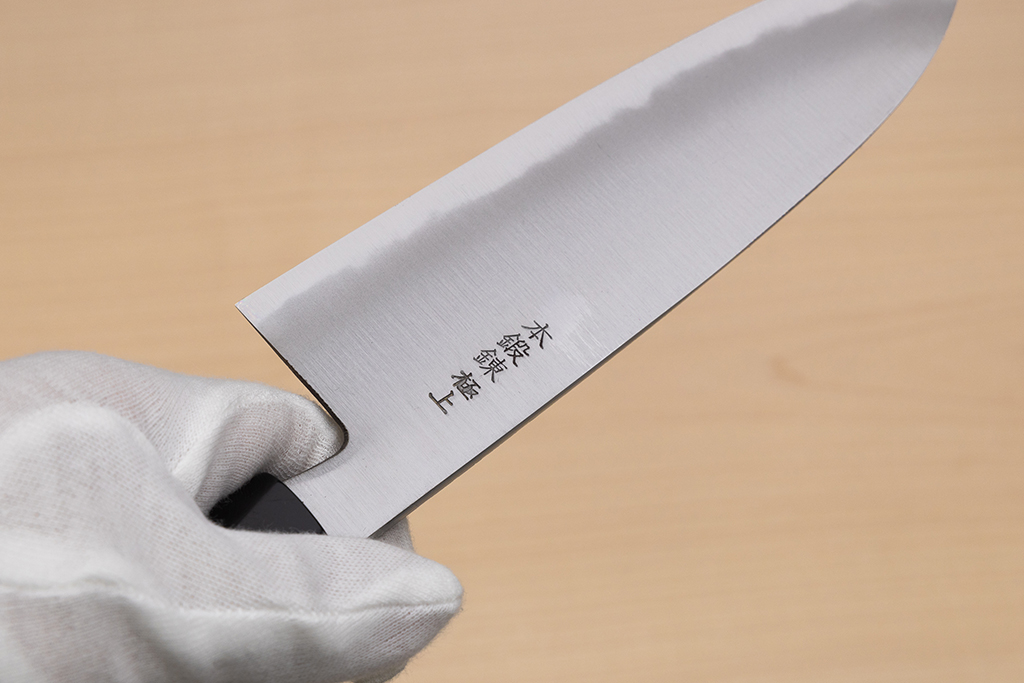
This is a type of steel that combines the best of both worlds. It has the hardness and sharpness of carbon steel and the rust and corrosion resistance of stainless steel. It is also more expensive and less common than the other two types.
Ceramic Chef’s Knives

Ceramic chef’s knives are made of zirconium oxide, a very hard and lightweight material. Ceramic chef’s knives are very sharp, durable, and resistant to rust, corrosion, stains, and odors. They can also retain their edge for a long time without needing sharpening. However, they can also chip or break if dropped or mishandled. They are also more difficult to sharpen than steel knives and require special tools.
Titanium Chef’s Knives
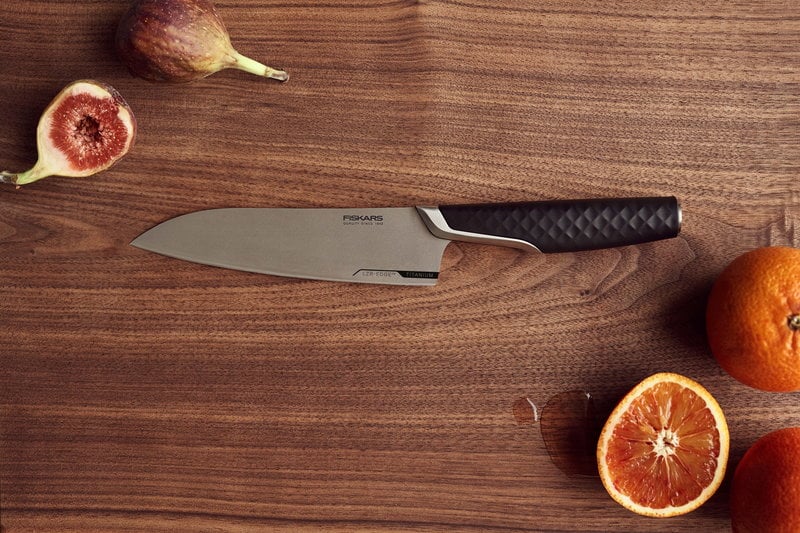
Titanium chef’s knives are made of titanium alloy, a metal that is lighter and stronger than steel. Titanium chef’s knives are also very sharp, durable, and resistant to rust, corrosion, stains, and odors. They can also retain their edge for a long time without needing sharpening. However, they are also less sharp and more expensive than steel knives. They are also more rare and harder to find than other types of chef’s knives.
Resin-Coated Chef’s Knives

Resin-coated chef’s knives are steel knives coated with a non-stick resin that prevents food from sticking to the blade. Resin-coated chef’s knives are easy to clean and maintain. They can also reduce friction and drag when cutting through food. However, they can also scratch or wear off over time and expose the underlying steel blade. They can also lose their non-stick properties if exposed to high temperatures or acidic foods.
Japanese Chef’s Knives

Japanese chef’s knives are a category of chef’s knives that originate from Japan and have distinctive features and styles. Japanese chef’s knives tend to have a straighter blade and be made from harder (and so slightly more brittle) steel than Western-style chef’s knives. Some of the most popular types of Japanese chef’s knives are:
Gyuto:

This is a Japanese version of a chef’s knife that uses the French profile for a blade. It is versatile and sharp and can be used for most kitchen tasks.
Santoku:
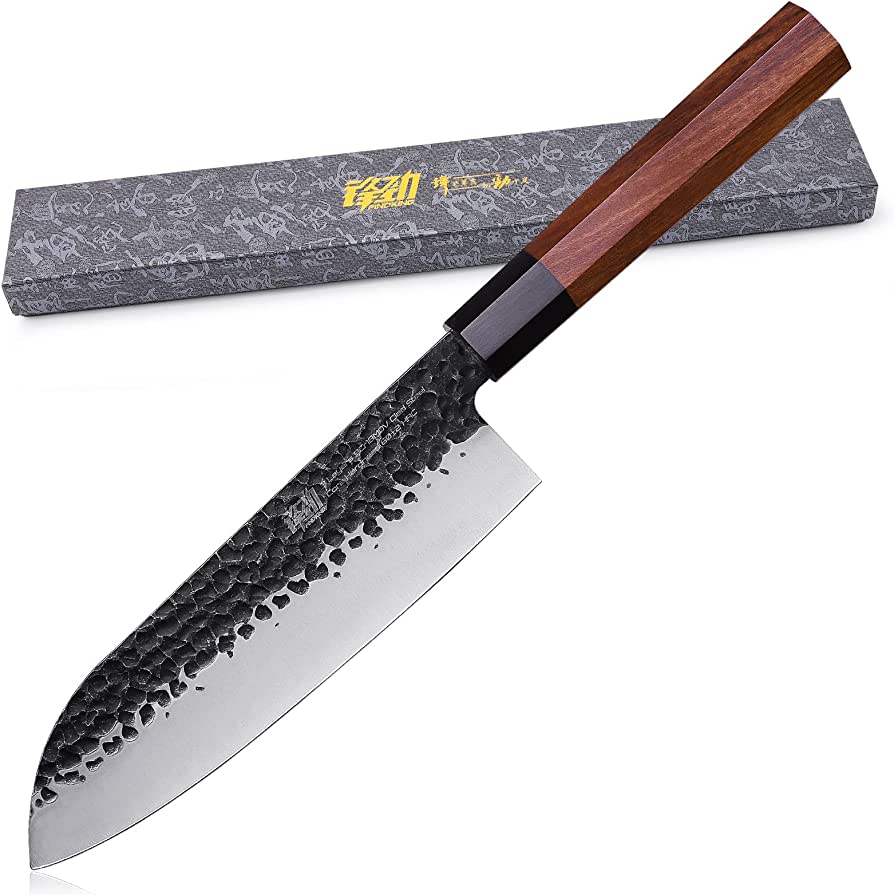
This is another Japanese version of a chef’s knife that has a flatter blade and a sheep’s foot tip. It is good for slicing, dicing, and mincing vegetables, herbs, and meat.
Chinese chef’s knife:
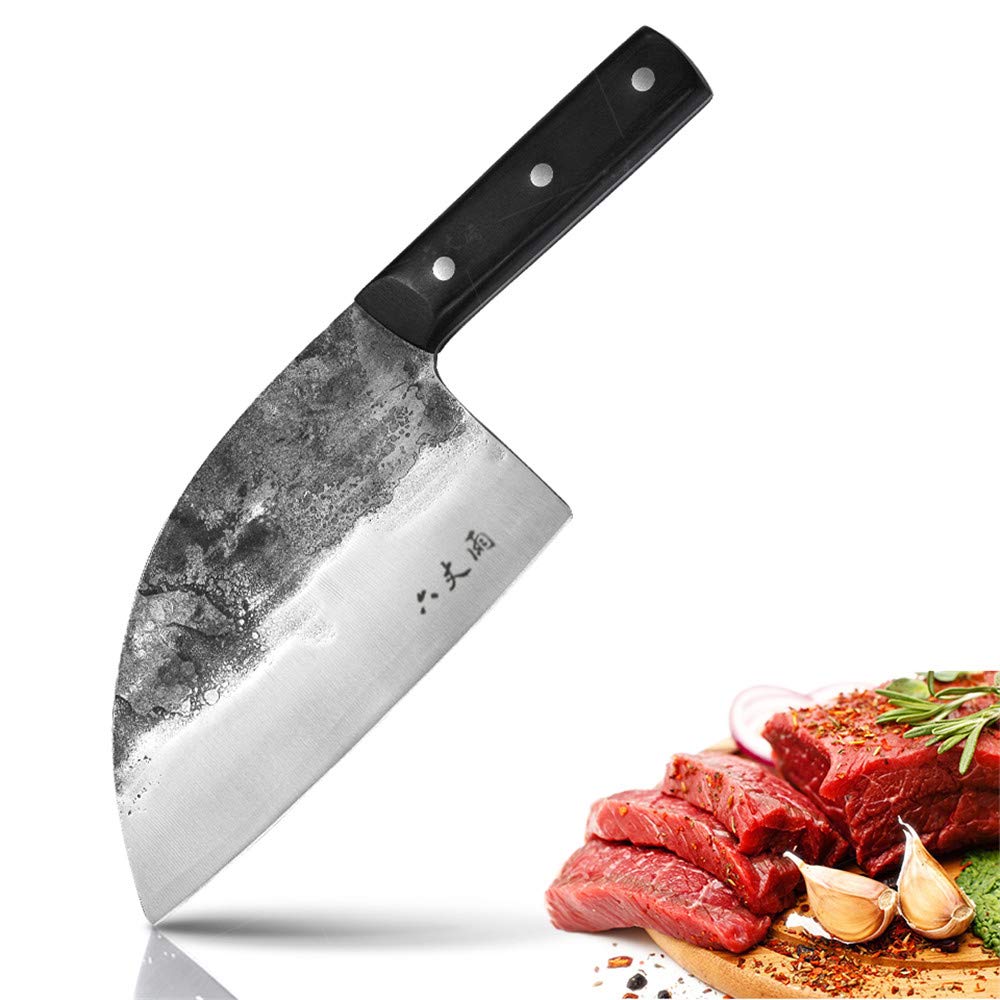
This is a large and heavy knife that resembles a meat cleaver but is used for chopping and slicing vegetables and meat. It has a wide blade that can also be used for scooping or transferring food.
Other Types of Knives
Besides the types of chef’s knives mentioned above, there are also other types of knives that can be useful for specific tasks or preferences in the kitchen. Some examples are:
Bread knife:
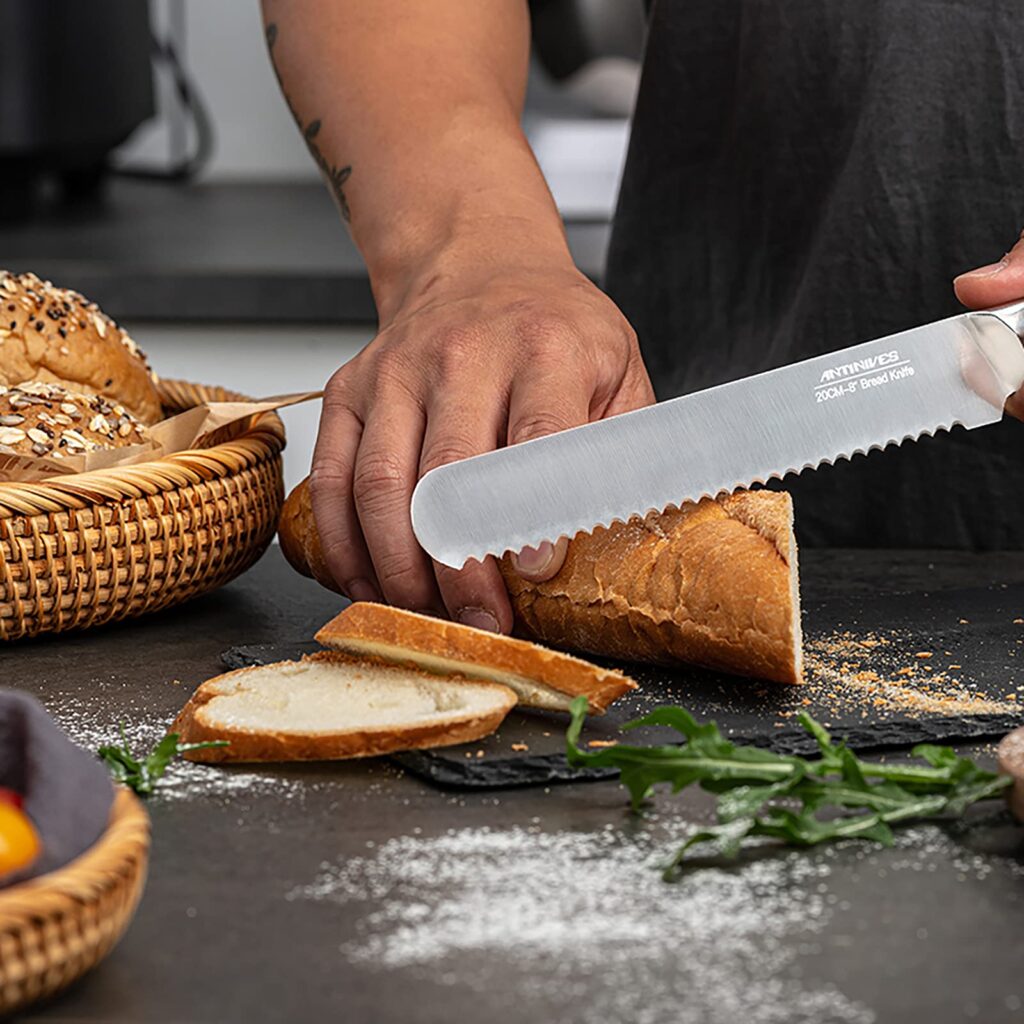
This is a long knife with a serrated edge that makes it perfect for slicing crusty bread without crushing it. It can also be used for cutting tomatoes, fruits, tough vegetables, and holiday roasts.
Paring knife:
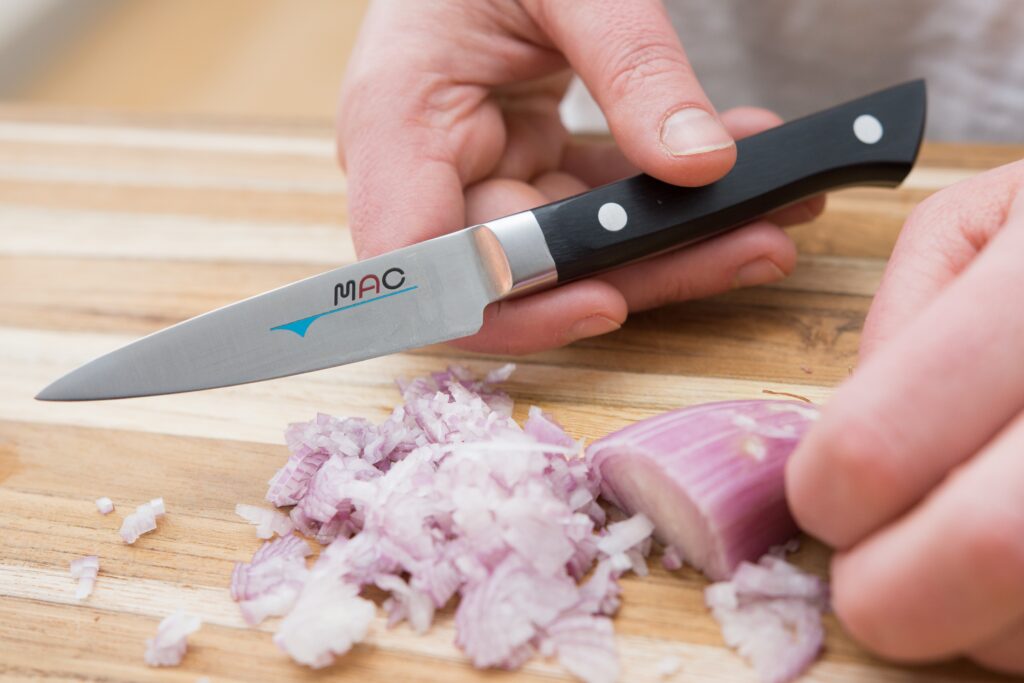
This is a small and sharp knife that is used for peeling, trimming, and cutting small fruits and vegetablesIt is ideal for delicate and intricate work that requires precision.
Fillet knife:
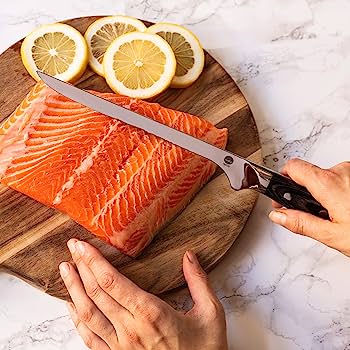
This is a thin and flexible knife that is used for filleting, skinning, and deboning fish. It can also be used for slicing meat thinly.
Carving knife:
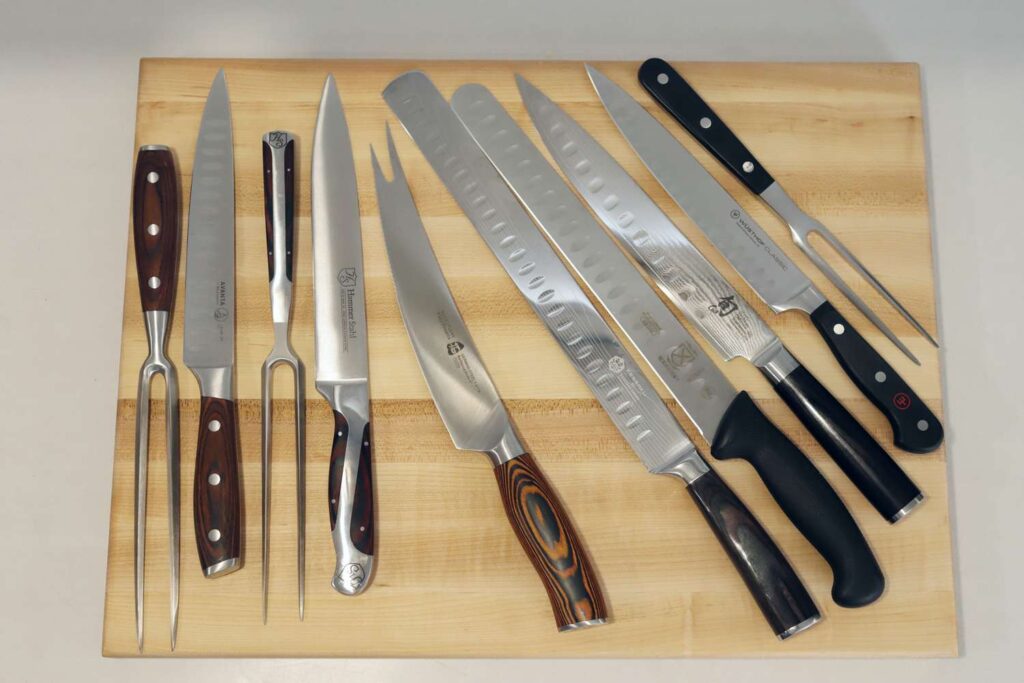
This is a long and narrow knife that is used for carving and slicing cooked meat, such as turkey, ham, or roast beef. It can also be used for cutting large fruits and vegetables.
How to Choose the Best Chef’s Knife for You
Choosing the best chef’s knife for you depends on several factors, such as your budget, your cooking style, your personal preference, and your skill level. Here are some tips to help you make the best decision:
Budget:
Chef’s knives can range from very cheap to very expensive, depending on the type, quality, and brand of the knife. Generally, you get what you pay for, but you don’t have to break the bank to get a decent knife. You can find good quality chef’s knives for around $50-$150. However, if you want to invest in a premium knife that will last you a lifetime, you can expect to pay more than $200.
Cooking style:
Different types of chef’s knives are suited for different types of cooking. For example, if you cook a lot of meat, you might prefer a heavier and sturdier knife that can chop through bones and joints. If you cook a lot of vegetables, you might prefer a lighter and sharper knife that can slice and dice with ease. If you cook a variety of foods, you might prefer a versatile and all-purpose knife that can handle most tasks.
Personal preference:
Ultimately, the best chef’s knife for you is the one that feels comfortable and natural in your hand. You should consider the size, weight, balance, shape, and grip of the knife and how they fit your hand size and shape. You should also consider the aesthetics and design of the knife and how they appeal to your taste. The best way to find out if a knife is right for you is to try it out before buying it or read reviews from other users who have similar preferences as you.
Skill level:
Your skill level as a cook can also influence your choice of chef’s knife. If you are a beginner or casual cook, you might want to start with a simple and easy-to-use knife that won’t require much maintenance or sharpening. If you are an intermediate or advanced cook, you might want to upgrade to a more sophisticated and high-performance knife that will enhance your cooking experience and results.
Conclusion
A chef’s knife is a must-have tool for any home chef. It can help you prepare delicious meals with ease and efficiency. However, not all chef’s knives are the same. There are different types of chef’s knives that have different features, advantages, and disadvantages. By knowing the different types of chef’s knives and how to choose the best one for your needs, you can make the most of your kitchen adventures.

